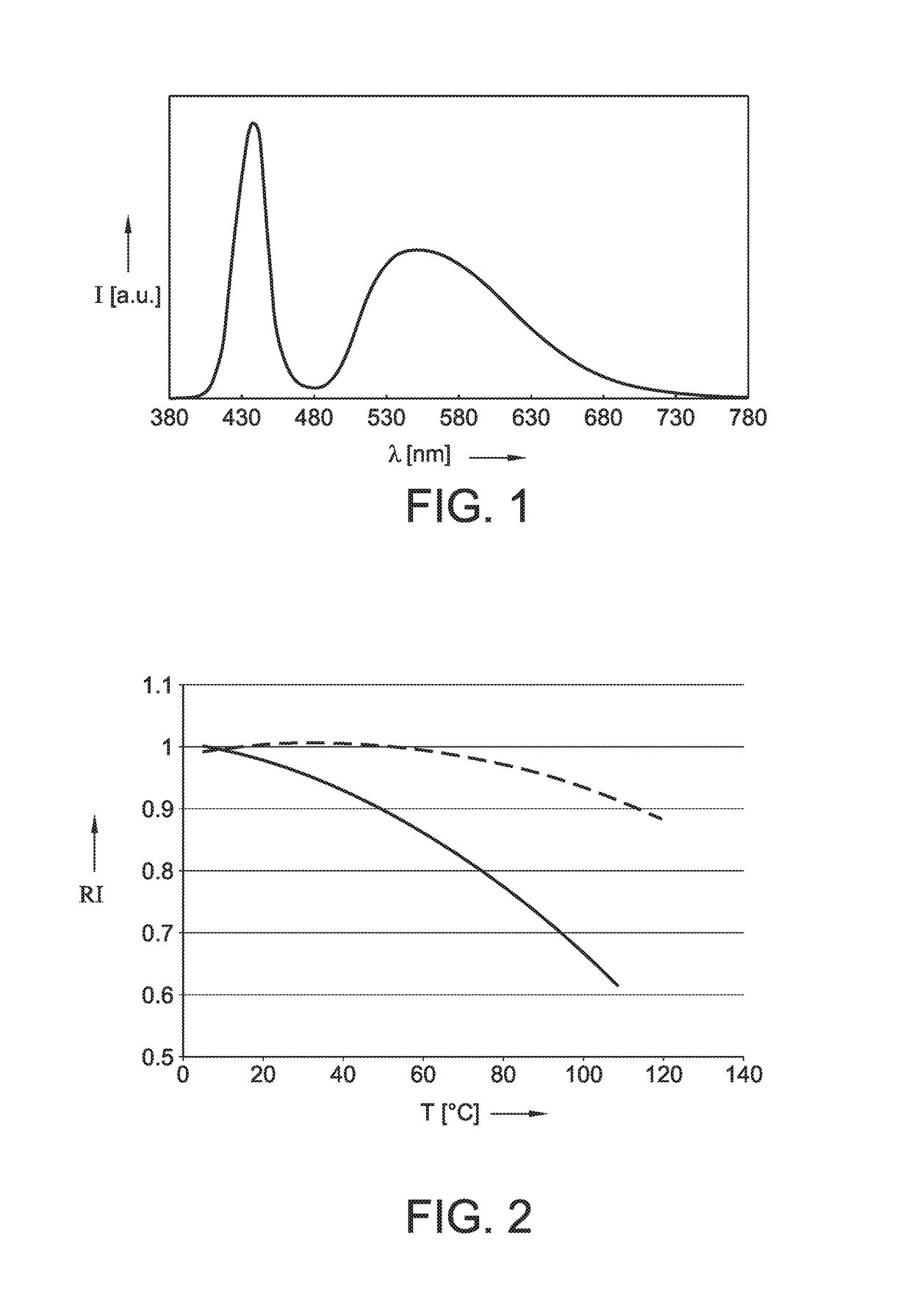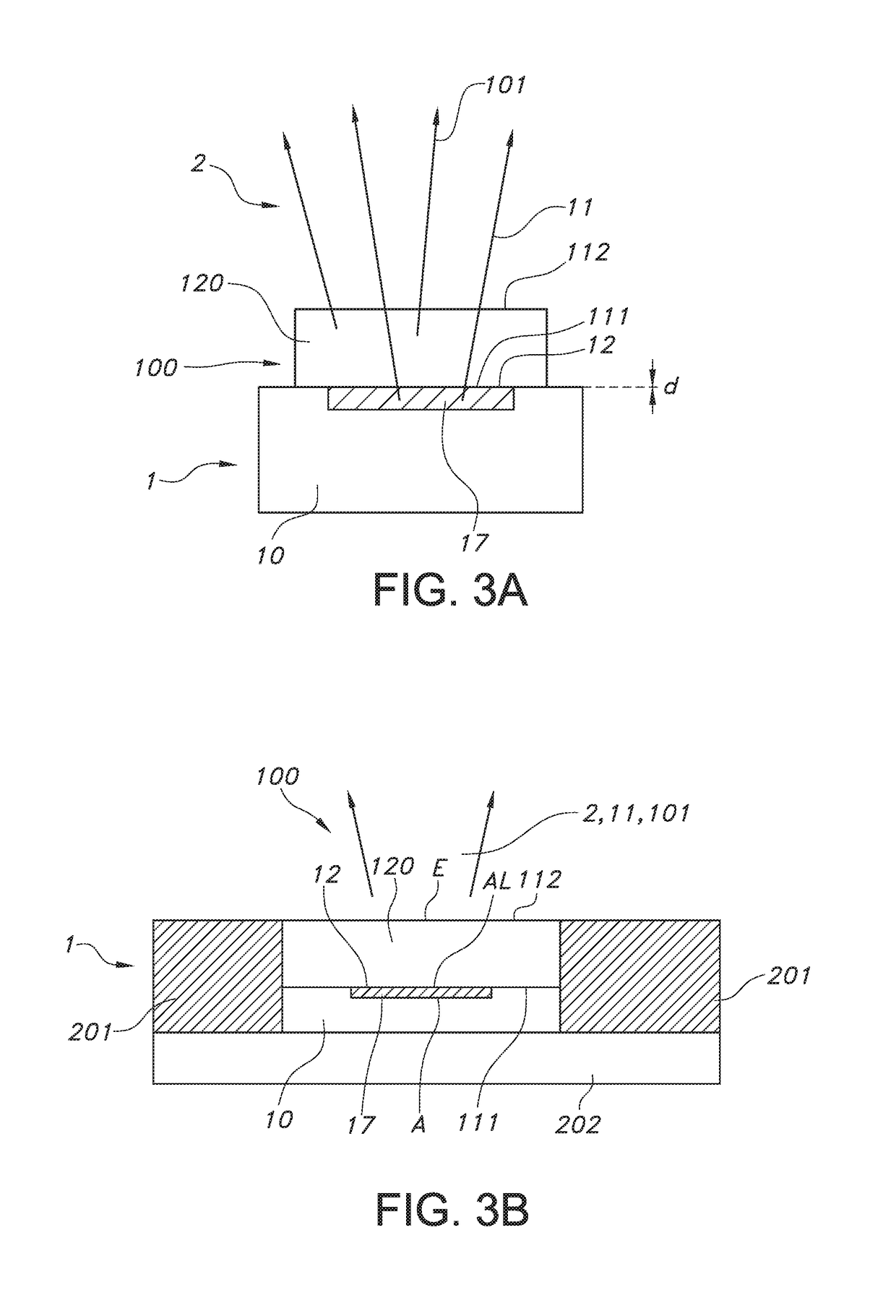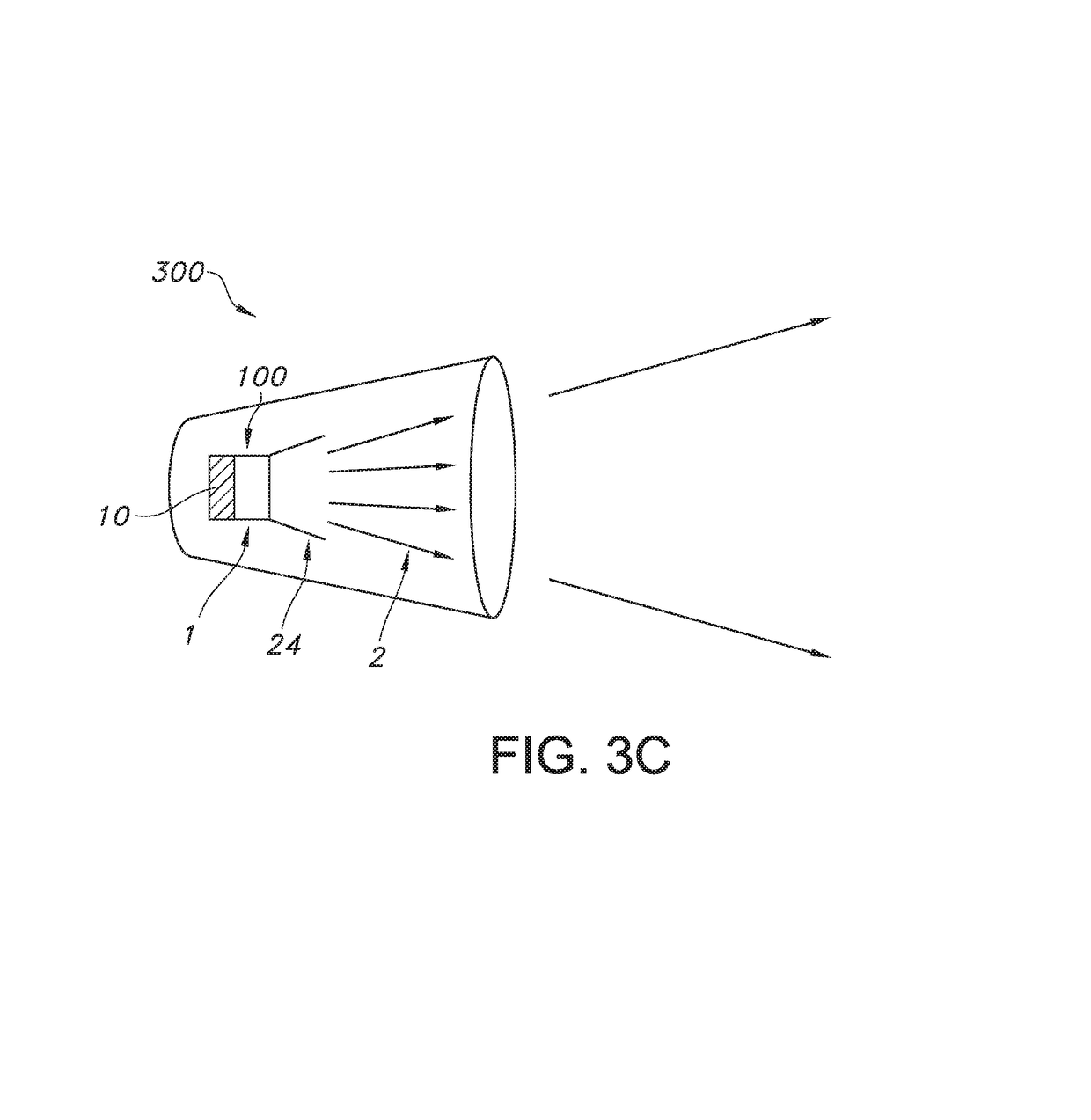White phosphor converted LED with stable flux output versus temperature
a white phosphor and flux output technology, applied in the field of lighting devices, can solve the problems of unsuitable light sources for automotive applications, and achieve the effects of good luminescent materials for automotive applications, enhanced outcoupling of light, and high brightness sources
- Summary
- Abstract
- Description
- Claims
- Application Information
AI Technical Summary
Benefits of technology
Problems solved by technology
Method used
Image
Examples
Embodiment Construction
[0056]For some white LED applications, e.g. automotive forward lighting, a stable flux output at different temperatures is required. Blue InGaN LEDs reduce output power with increasing temperature. This invention describes the combination of a blue LED with a yellow emitting phosphor with stable white flux output with varying LED and phosphor temperature, by using a Lumiramic converter which increases QE as a function of temperature (at high blue power input).
[0057]In automotive forward lighting white LEDs are used, made of a blue emitting InGaN LED (430-460 nm peak emission) combined with a yellow emitting garnet phosphor (Y,Gd)3Al5O12 activated with Ce. FIG. 1 shows a typical white emission spectrum. Here the garnet phosphor consists of a Lumiramic converter with a Ce conc. of 0.24% and a Gd concentration of 13% (i.e. (Y0.8676Gd0.13Ce0.0024)3Al5O12. FIG. 1 shows the emission spectrum of a phosphor converted blue LED. Color point is: u′=0.204, v′=0.478 (CIE 1976). The blue peak wav...
PUM
 Login to View More
Login to View More Abstract
Description
Claims
Application Information
 Login to View More
Login to View More - R&D
- Intellectual Property
- Life Sciences
- Materials
- Tech Scout
- Unparalleled Data Quality
- Higher Quality Content
- 60% Fewer Hallucinations
Browse by: Latest US Patents, China's latest patents, Technical Efficacy Thesaurus, Application Domain, Technology Topic, Popular Technical Reports.
© 2025 PatSnap. All rights reserved.Legal|Privacy policy|Modern Slavery Act Transparency Statement|Sitemap|About US| Contact US: help@patsnap.com



